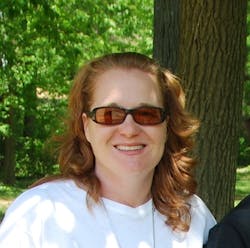Outreach & Influence
Concerns about storm water discharges continue to grow, and now, communities are turning to their residents to help curb the problem. Here, SWS Associate Editor Nicole Bowling speaks with Aileen Winquist, the Arlington County, Va.’s Environmental Services Watershed Outreach Program manager, about Arlington County’s efforts to educate and influence its residents’ pollution habits.
Nicole Bowling: What is the Watershed Outreach program and how did it start?
Aileen Winquist: At the Watershed Outreach program, we run a variety of different campaigns and workshops as part of our MS4 [Municipal Separate Storm Sewer System] permit—we have sort of a mandate to do public education. One piece of this is our regional education campaign, “Only Rain Down The Drain,” which uses radio and online advertising to help people understand storm water and what they can do to prevent pollution. We are focusing on three behaviors: proper disposal of [both] pet waste and motor oil, and reduction in fertilizer use. We also do workshops, which are more action-based, to engage people as well.
Bowling: How does the Water Outreach program involve the community in storm water and
water reuse issues?
Winquist: The regional education campaign is the first piece of the program and the second is the workshops we host, like rain garden training and the regional rain barrel program. The workshops are action oriented in that we give people the tools and resources to go home and do something right away.
Bowling: How successful has this initiative been?
Winquist: We try to do evaluations for all of our programs. The “Only Rain Down the Drain” campaign has been fairly successful—we have been able to show that people who were exposed to our advertising, or to the blog, show a behavior change. They are taking that first step toward pollution reduction.
We also do follow-up surveys for the rain barrel and rain garden workshops to see how many people are actually using the tools in their yards. We have found that close to 90% of the people who get rain barrels take them home and use them, and more than half report that they take further action to reduce pollution.
As many in the industry know, the trick with storm water education is being able to measure effects at the stream level. It gets more complicated to take those programs and carry them all the way through.
Bowling: What are some suggestions for other community organizations or utilities that want to create a similar public outreach program?
Winquist: I am a big believer in creating partnerships. We are coming up on our 10th year of the education campaign and when we first started, we got a few jurisdictions to work together and pool money and resources. Now we are up to about 15 different partners between other jurisdictions and utilities. This lets me leverage my budget and lets us all be more consistent. There is a better chance someone will remember our tagline if they hear it everywhere.
As far as getting residents involved, I recommend taking the pulse of what folks in your area are interested in. One thing we have found, and have also heard [is] happening in other areas, is that people are excited about rain barrels. We didn’t jump into that immediately because, to be honest, they have a minimal impact in terms of storm water reduction, but they are a good entry point for folks. They get people to talk about storm water and pollution reduction. Then maybe when they go home, they will start thinking about ways they can make a rain garden or harvest more rainwater
Download: Here


